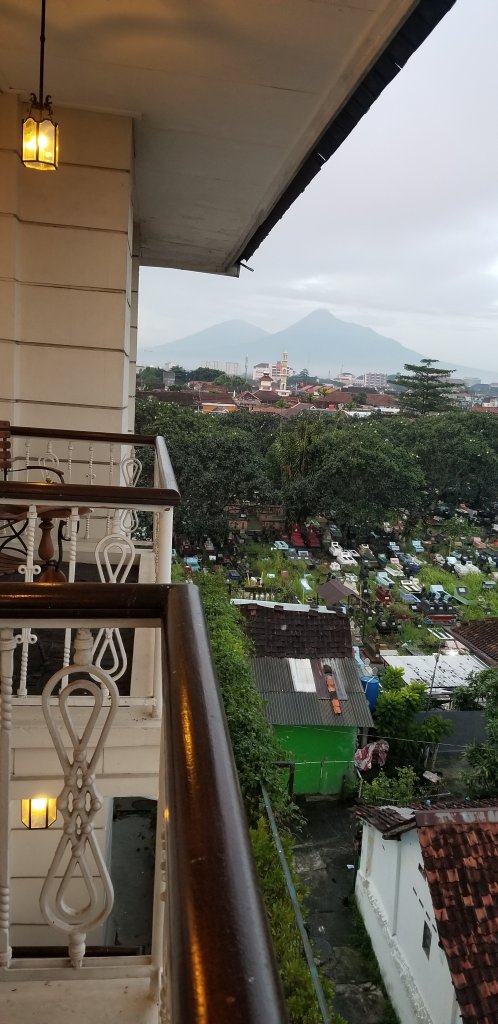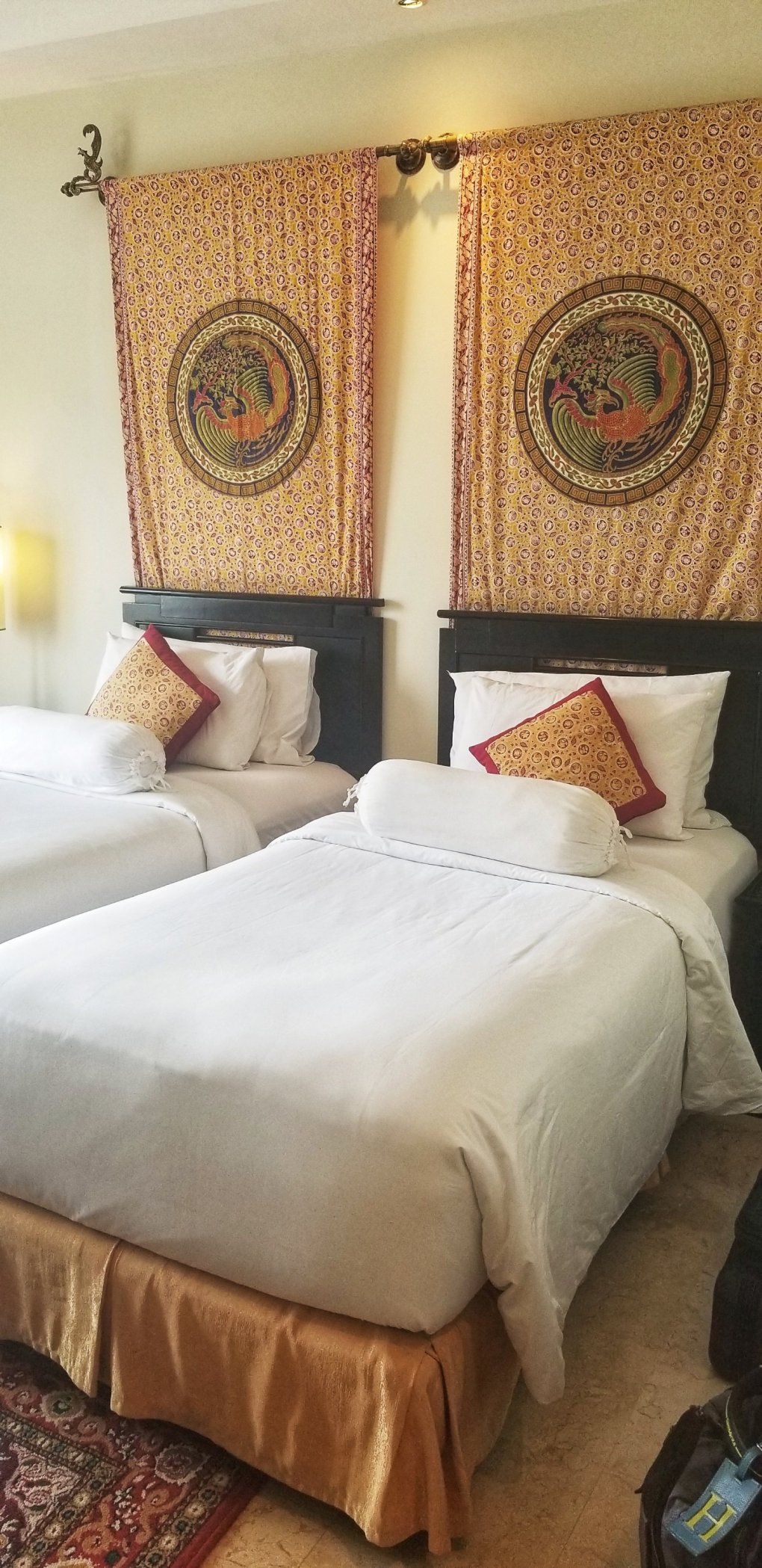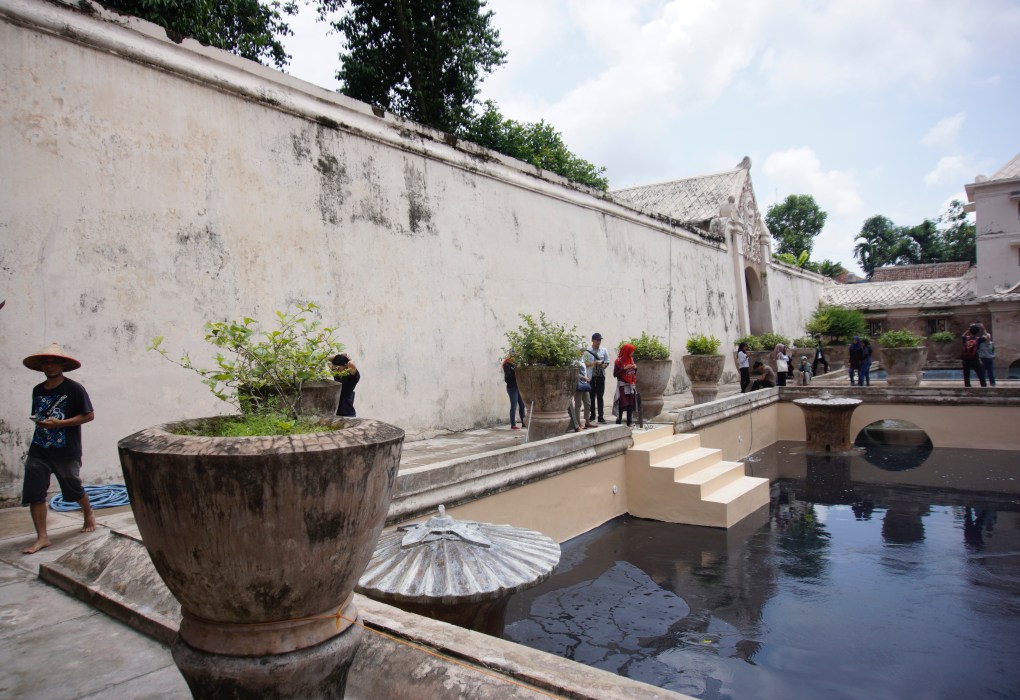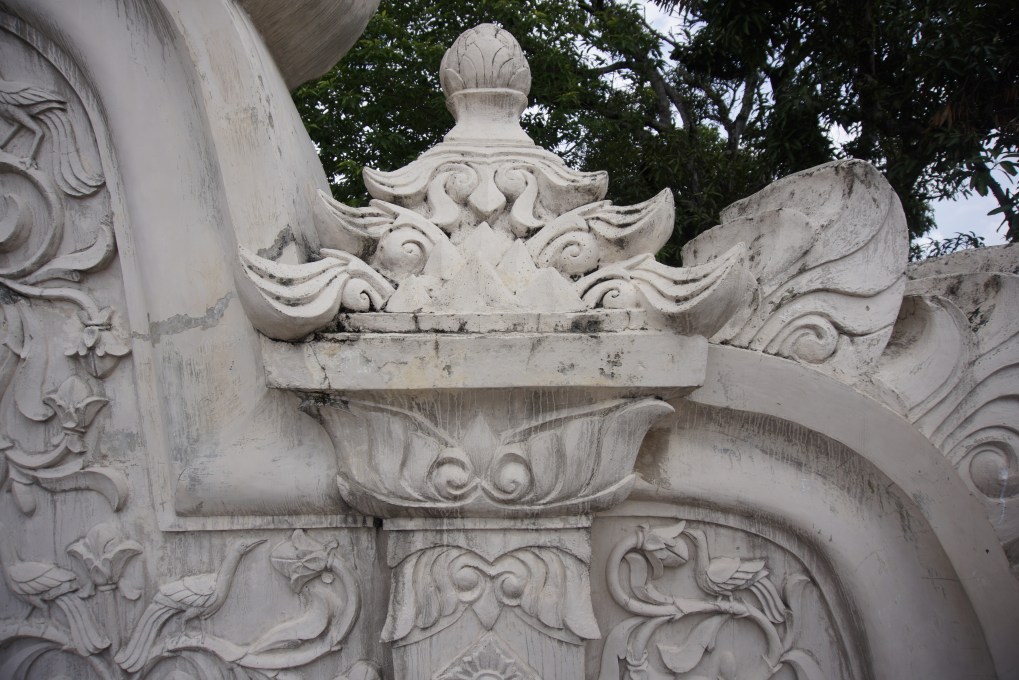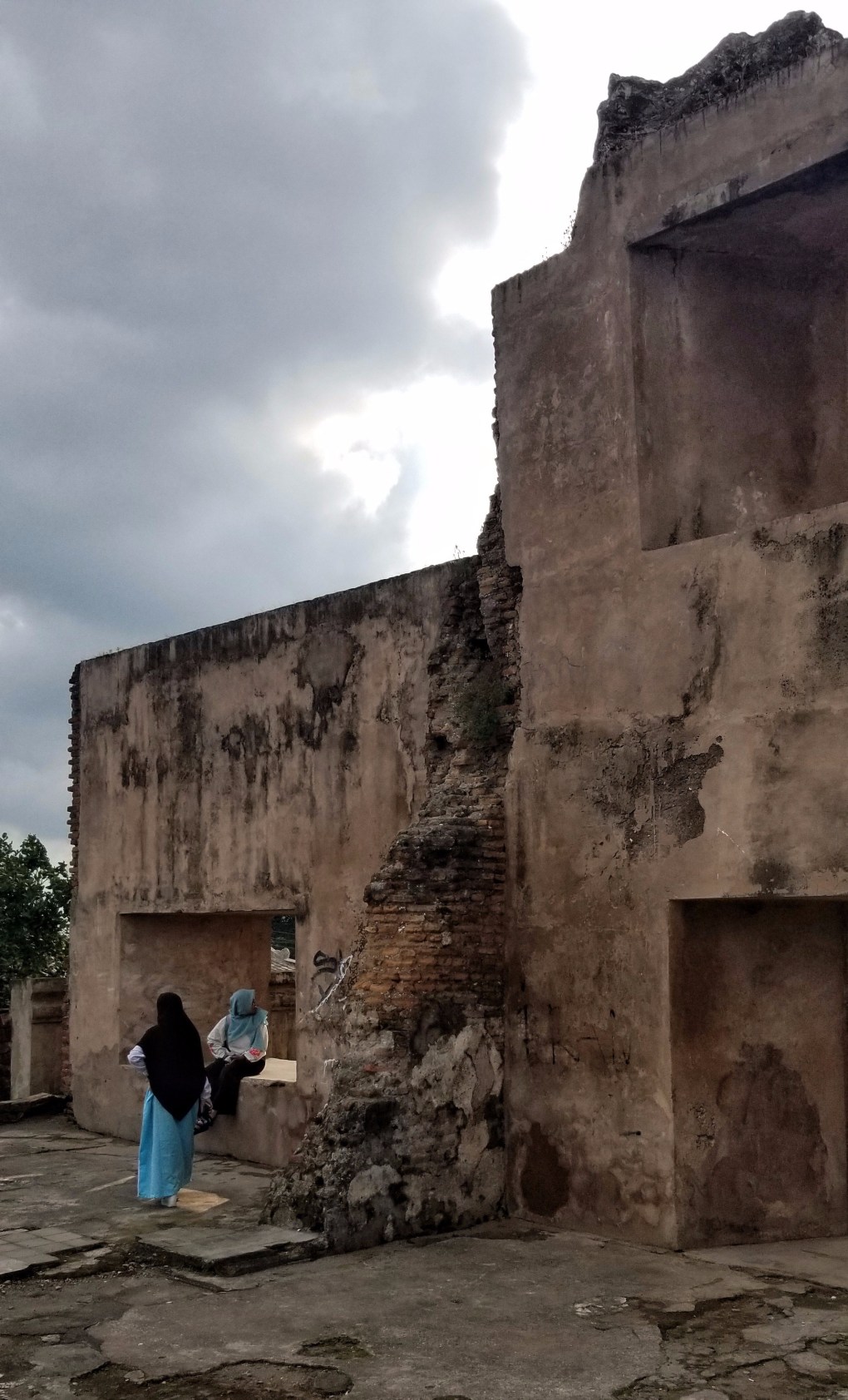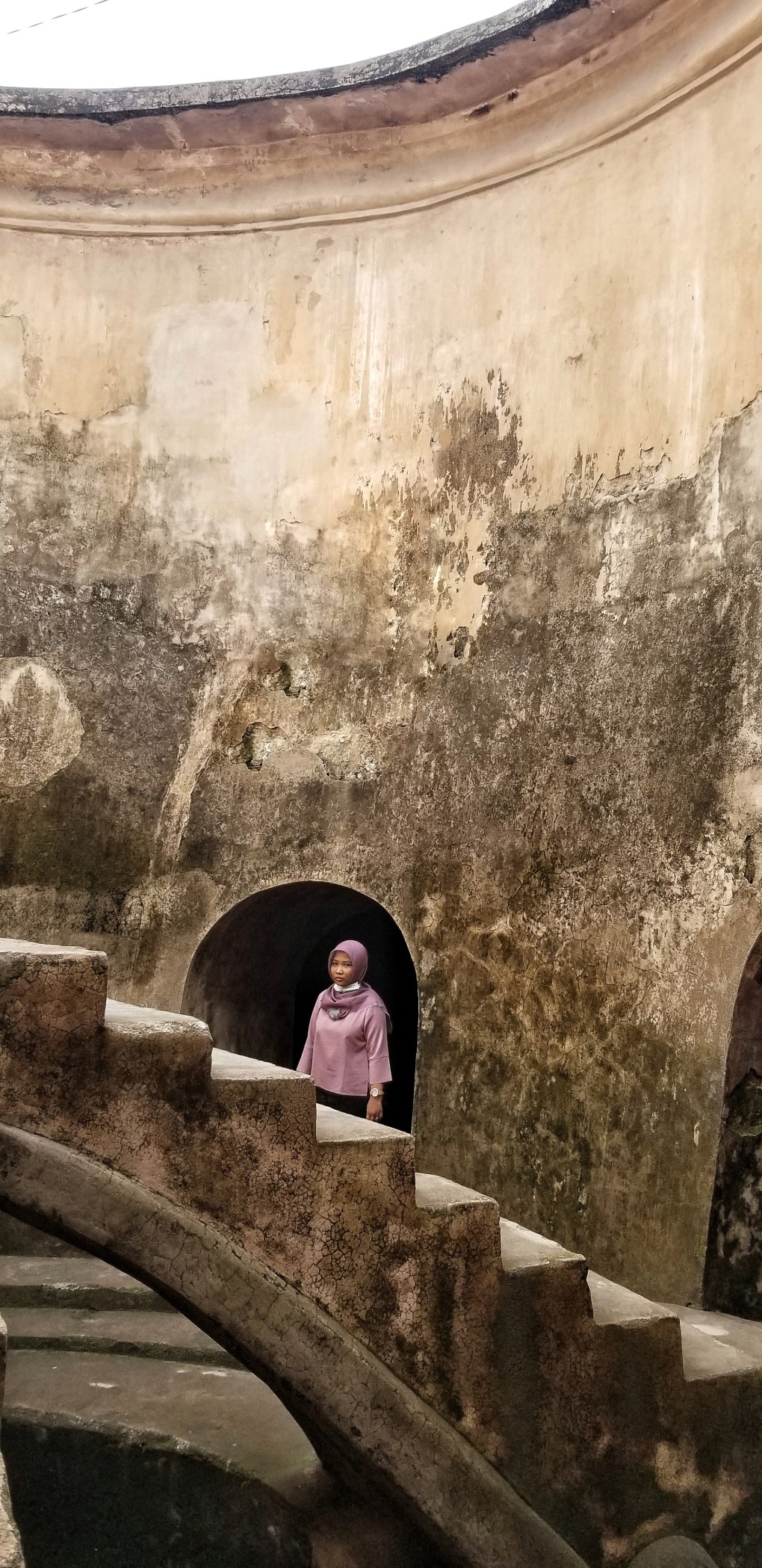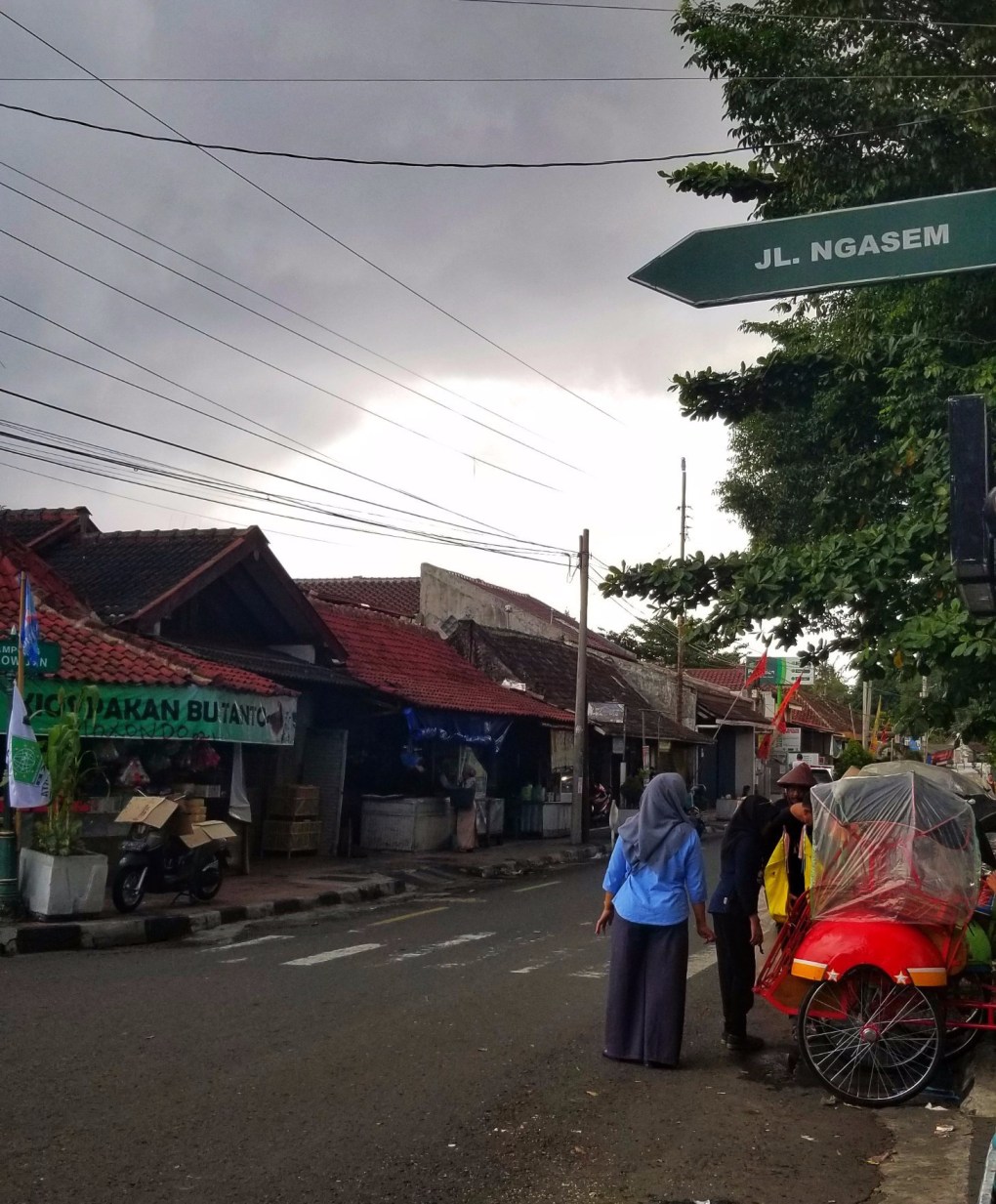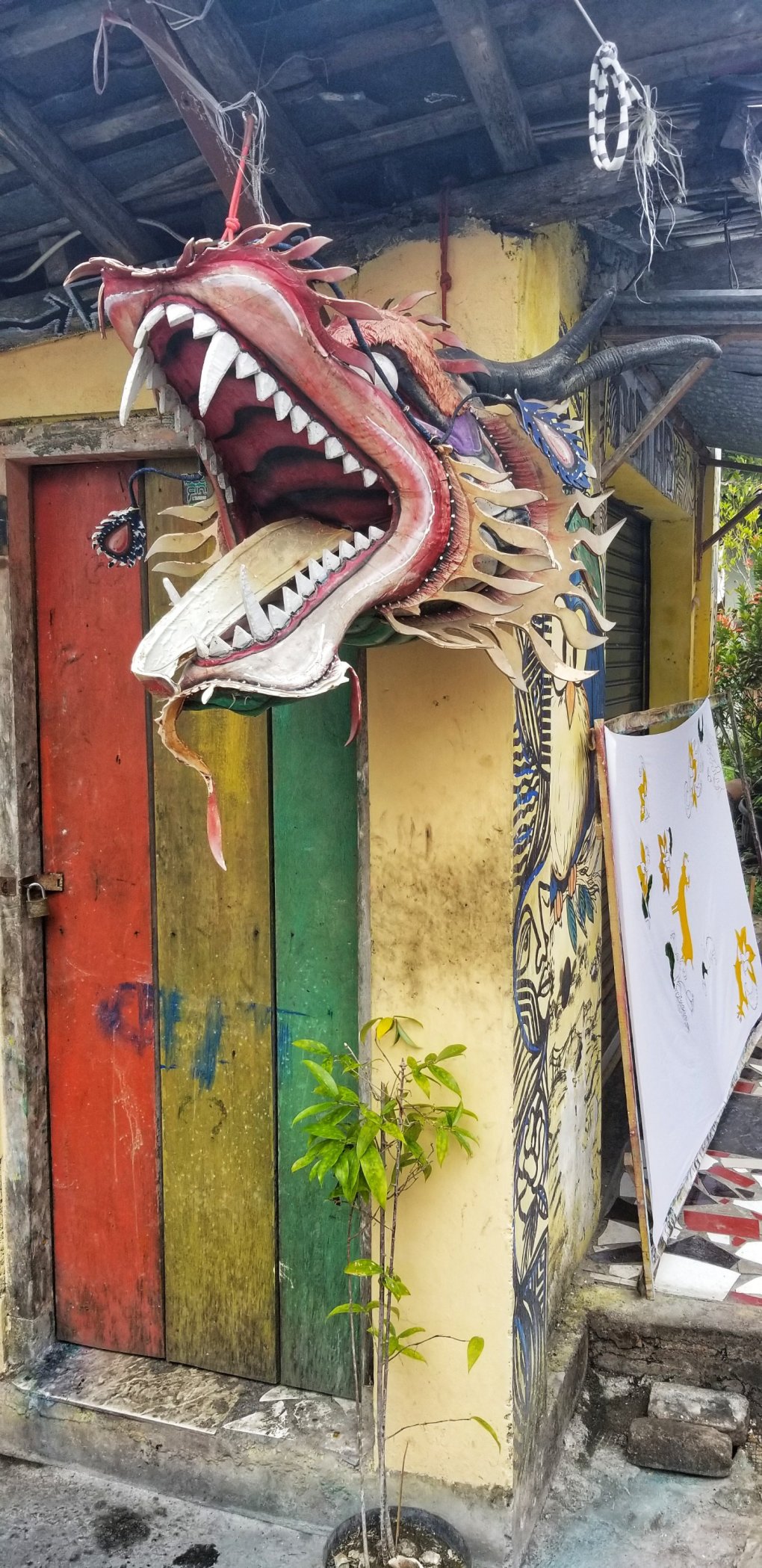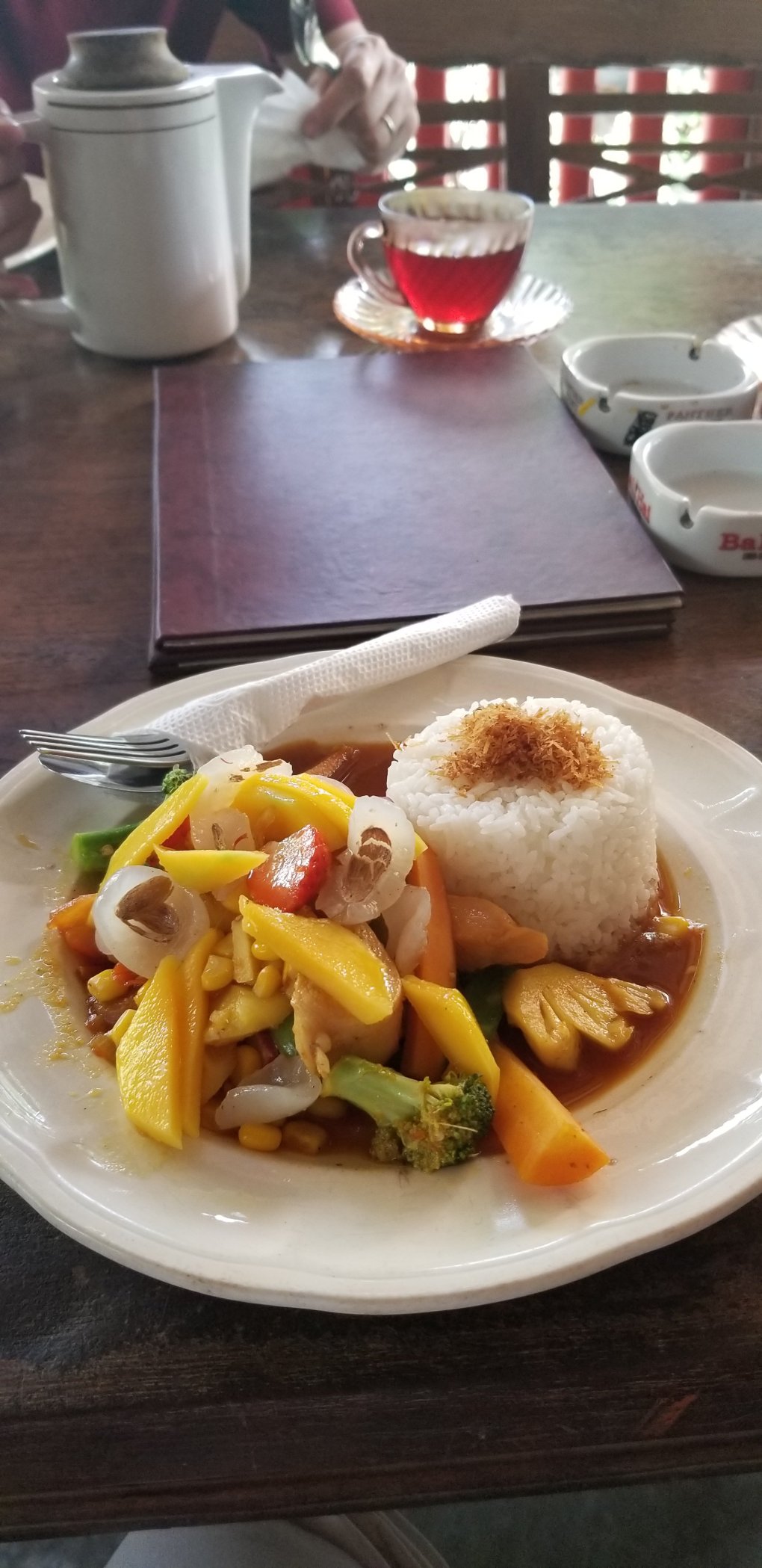There are three must-see sights in Yogyakarta on the island of Java. You don’t endure 20+ hours of travel and miss out on two monuments on the list of UNESCO World Heritage Sites and the mighty volcano Mount Merapi.
I highly recommend that you get a driver to take you to these main sights. They are all near Yogyakarta. We found our driver and host through one of my companions’ tennis pro in Jakarta, who knew a guy…. This “guy,” our host, also plays tennis and his son is a ranked junior in Indonesia. It gave us something to talk about. We had a full day and were lucky with the weather — mostly cloudy, humid, no rain.
Our first stop was Borobudur, the largest Buddhist temple in the world. Religion has factored large in Indonesia’s long history. One dynasty or another has held sway through the centuries, and their favored religion — Buddhist, Hindu, or Islam — would be dominant. The Sailendra dynasty, of which there is little information, ruled Java for five centuries. They presided over Borobudur’s construction in the late 8th century. After about 70 years and the input of successive generations of Sailendras, Borobudur was finally completed. There is no written record of how the temple was used, but it is attributed to Buddhism. By the early 11th century, the Sailendras went *poof!* and abandoned the temple. Indonesian dynasties came and went over many centuries. Could Mount Merapi’s massive eruption in 1006 A.D. have caused the Sailendra exodus, or were they displaced by another dynasty?
Borobudur was re-discovered in the 19th century amid shrubbery and underbrush. Nature had reclaimed its space over the centuries. Indonesia restored the temple in the 1970s and it was added to the list of UNESCO World Heritage Sites.
Walking through park grounds toward Borobudur, we encountered a gigantic spider exhibit. They were hanging in trees, in webs, and presented in assorted creepy ways.

You’ve got to get past the spiders to reach Borobudur.
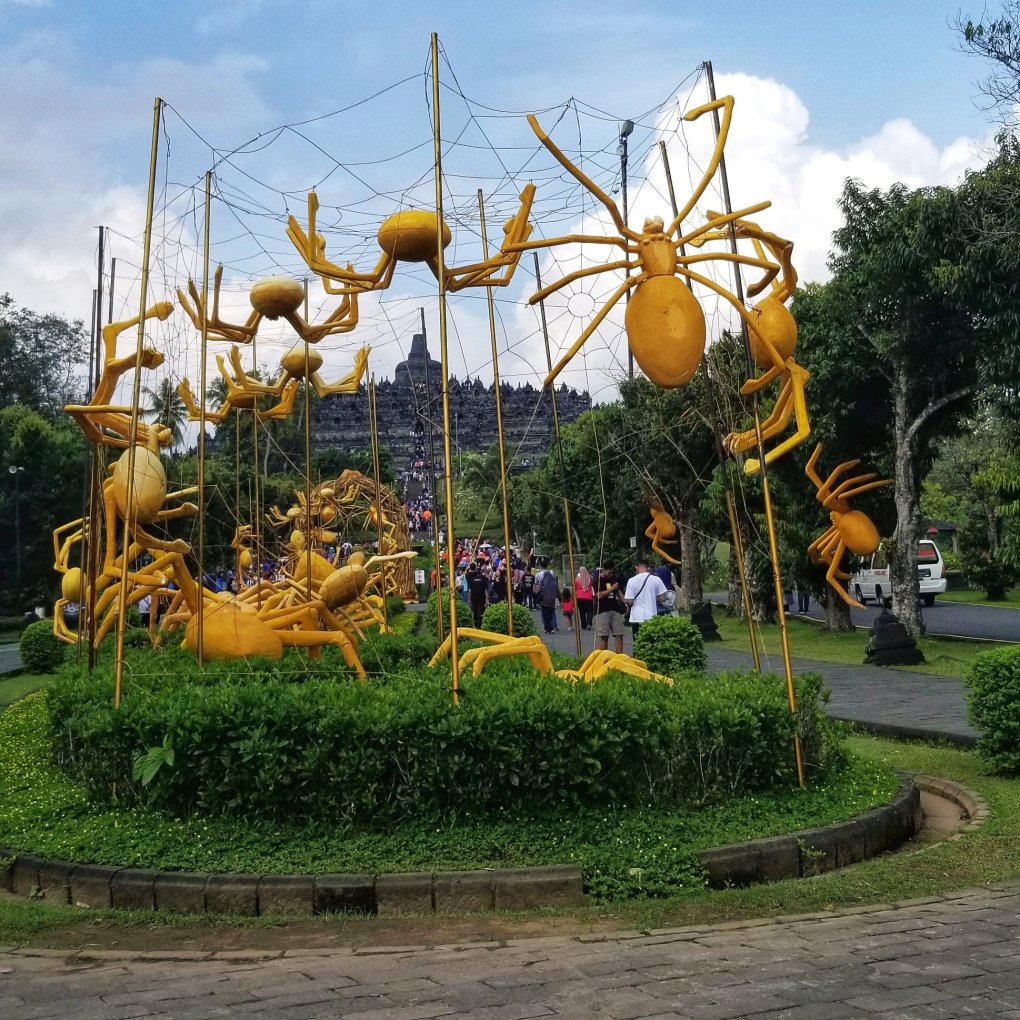
Borobudur’s construction consists of nine stacked platforms and a central dome. There are 2,672 relief panels and 504 Buddha statues, including some without heads. We climbed a lot of stairs and walked around several levels before reaching the top. See this website for an art historian perspective.

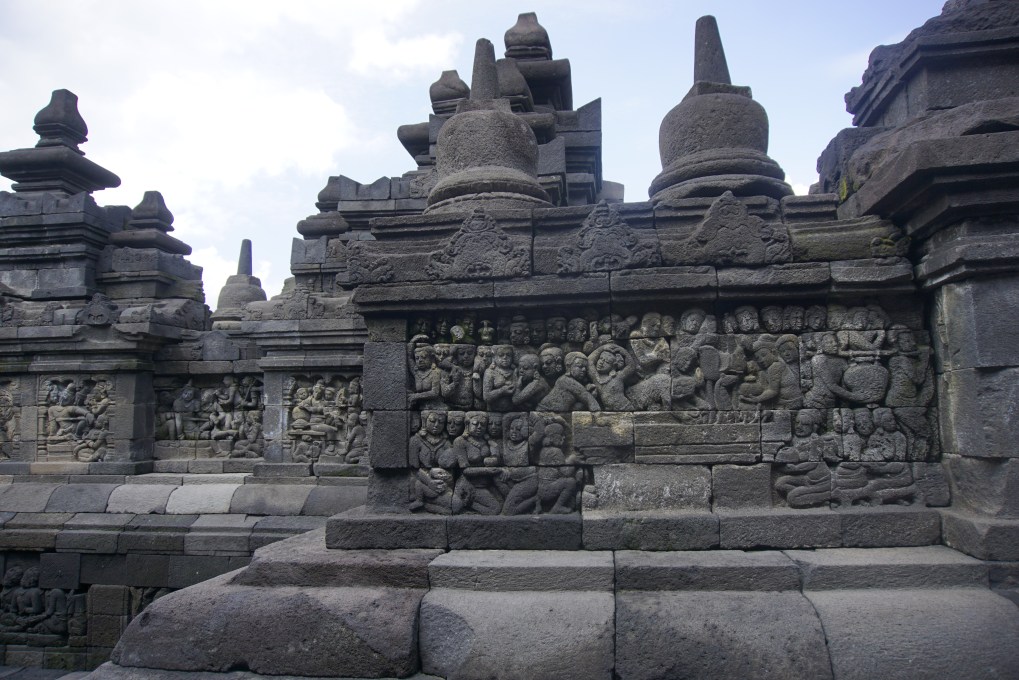




We interacted with groups of charming Indonesian students. Their teachers told them to find foreigners, practice English with them and take a group photo. First of all, in a total eight days on Java, I never saw another Black person, not even from Africa. Second, we are American, which might have been another prize (?) among the foreigner contingent. (We had encountered few Americans ourselves, which was fine with me because I was on vacation from other Americans. But, I digress.) Being Black and American might explain why these school kids stared at me. If I looked halfway friendly, they came over. It was cute to see each group push in front the kid who spoke the best English. And they were so polite!
The star English speaker is right in front of me in this photo.

We rejoined our host, who took us to his restaurant, Pondok Merapi. This is an off-the-beaten path restaurant, and our host was nothing if not enterprising. By hosting a day tour with a driver, the itinerary included lunch at his restaurant.

He walked us around his property to show the fruit trees and vegetables they harvest for the meals. A rooster and hens roamed the property. The chicks were cared for in a separate area. Our host explained the system he installed to route fresh, unadulterated water to his property.

As for lunch, there was no menu. The meal was comprised of whatever was grown or raised on the property. We had delicious soup and vegetables. Best of all, we had the “real chicken” our host promised. Even if we had first encountered our chicken in the restaurant’s front yard, it was a novelty to eat food so fresh, organic, and delicious!

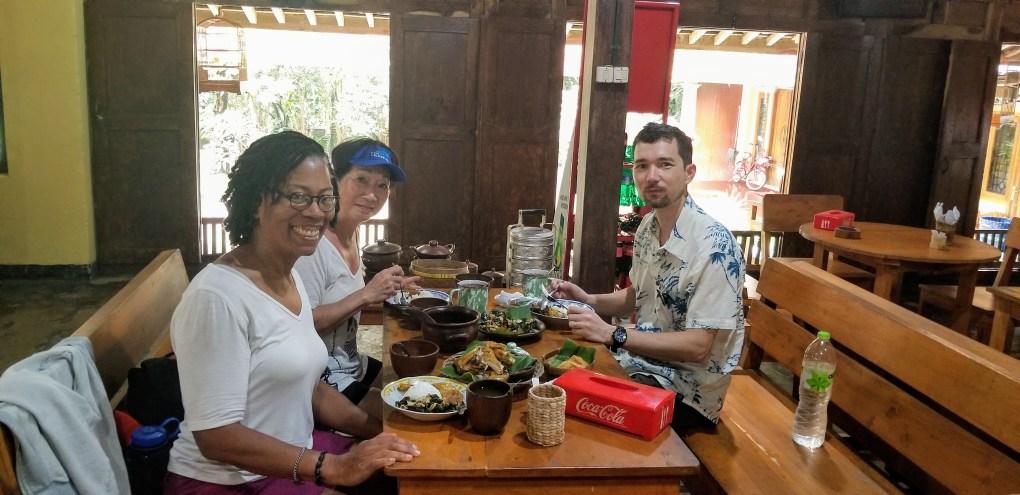
After lunch, we loaded up in a jeep to see Mount Merapi, one of the most active volcanoes in the world. It has had more than 70 eruptions since 1548. The most recent was the catastrophic eruption in October 25, 2010. Between October 23-24, 2010, more than 500 volcanic earthquakes were recorded until Mount Merapi finally blew and lost about 38 meters of its height. It was true to its name “Merapi,” which means “Mountain of Fire” in Javanese.

Our first stop was House of Memory in Cangkringan Village. This house is now part of a museum showing how Mount Merapi destroyed a nearby home. The scene was how I imagined nuclear aftermath complete with dust and ash. In one room, a computer keyboard and television were melted in place. (I could only take a couple of photos before museum personnel shut me down.)
Nearly 1 million people live near the volcano. After the devastating 2010 eruption, approximately 400,000 people evacuated and 2,200 families lost their homes. Displaced households were permanently relocated to safer areas.

We got back in the Jeep for a jarring drive to a spot where we could view Mount Merapi.

When we arrived, we went to Bunker Kaliaden. It was built to provide temporary shelter from hot gases caused by Mount Merapi’s eruptions. In 2006, two men, who were helping evacuate people from the area, sought shelter in the bunker, and became trapped. To reach them, rescuers had to dig through six feet of hot ash and debris, and then remove a red-hot boulder at the bunker entrance. The trapped men died from the intense heat. You can read more here and here.

Our host walked us to this location to see the great Mountain of Fire. As we wondered what was the point of walking to this particular location, our host pointed in the direction of the volcano. It’s “over there.”

Taking his word that it was “over there” somewhere, the volcano was completely obscured by fog. Then he told us that sunrise is the best time to see it. (I could actually see Mount Merapi from my hotel balcony so I had to be satisfied with that.) In one way nature didn’t cooperate with us on this excursion, but in another way it did. At least Mount Merapi didn’t act up and make us run for our lives.
Back in the Jeep, we bumped along the gravelly road back to our host’s restaurant, arriving with bruised hind parts. (Maybe I’ll speak for myself on that one.) We transferred to our suddenly super-luxurious SUV.
In late afternoon, we arrived at another outstanding monument, Prambanan — a large Hindu temple complex.

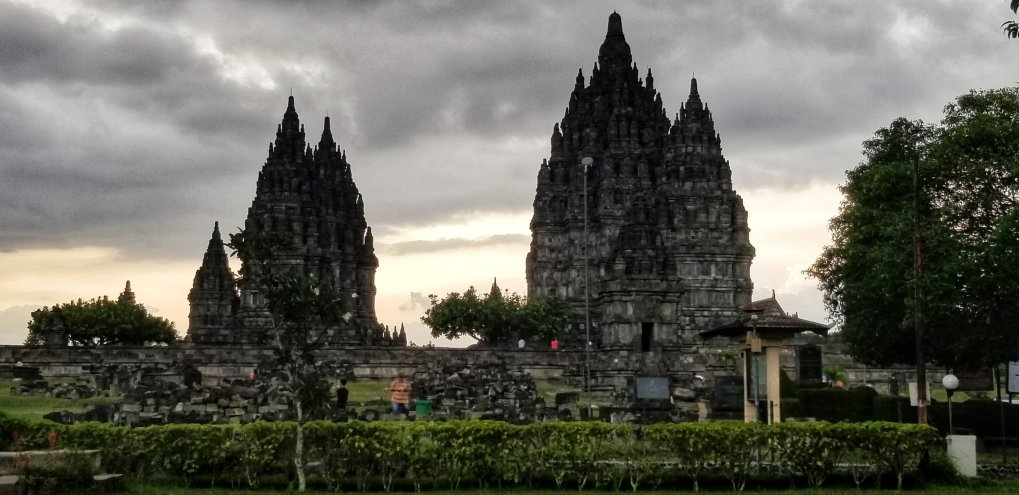
Like Borobudur, Prambanan was constructed while the Sailendras were still in power sometime in the 9th century. It’s the largest Hindu temple in Southeast Asia. I wonder if the monument-building was a little competitive: Buddhist vs. Hindu, or Buddha vs. Shiva. Regardless, at that time, there was peaceful religious co-existence.
By now, you should know that Indonesia is prone to earthquakes and volcanic eruptions. According to the UNESCO World Heritage Centre:
The temples collapsed due to earthquake, volcanic eruption and a shift of political power in the early 11th century, and they were rediscovered in the 17th century. These compounds have never been displaced or changed. Restoration works have been conducted since 1918, both in original traditional method of interlocking stone and modern methods using concrete to strengthen the temple structure.
You can see piles of stones around all the temples, probably from previous disasters. Prambanan was damaged again in 2006 by another earthquake. In Indonesia, it never ends ….


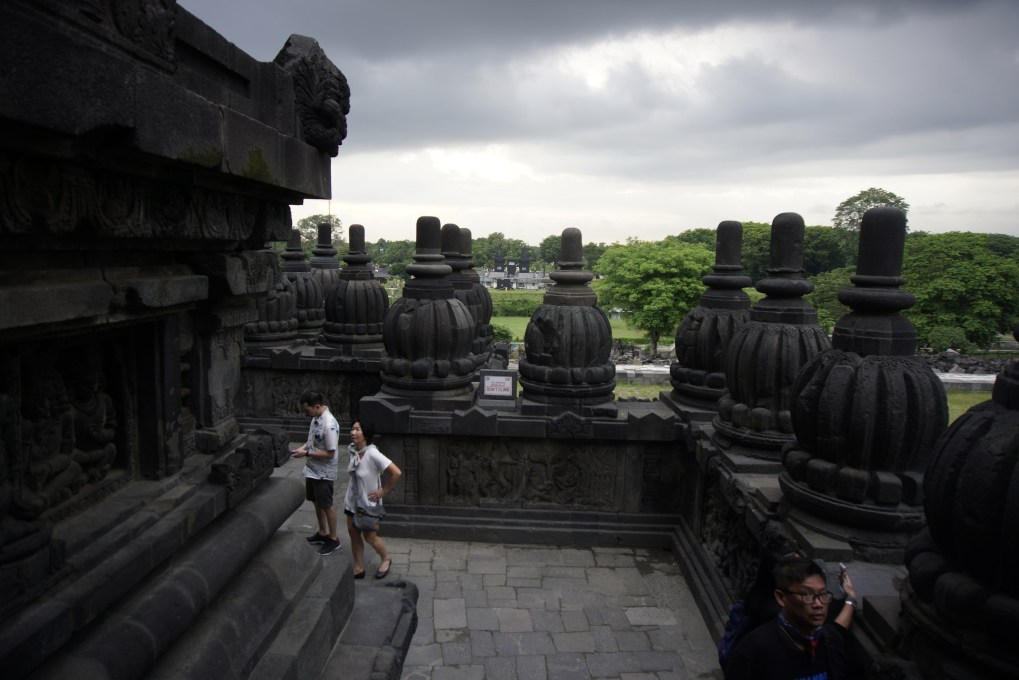
Prambanan was dedicated to three Hindu deities — the Creator (Brahma), the Preserver (Vishnu) and the Destroyer (Shiva). Three temples were also erected to the animals that serve them — (Nandi (a bull calf), Garuda (a bird-like creature with bird and human features) and Hamsa (an aquatic bird).

Prambanan is a large compound and it had the feel of sacred space. In all our movement around in that area, I discovered I lost my little purple camp towel. I considered it a stroke of inspiration that I had packed this towel. I needed that towel because, being monsoon season, it was humid. It was not possible to re-trace my steps as I had gone up and down temples, in one entrance and out another. I scanned the grounds from a perch to see if a little purple towel had sullied the grounds. Then, I went to one security guard after another and used this photo to ask about my towel.

I took a seat on the wall for a bit. I showed a guard I hadn’t seen earlier this photo of my towel. He went somewhere, and came back with it. I was so happy ….
We shattered the 10,000 steps per day activity goal exploring monuments that day. And we still had a cultural performance at Prambanan as the day’s last event. We skipped it, though, because dinner was more compelling. Thus ended a long and very satisfying day.



